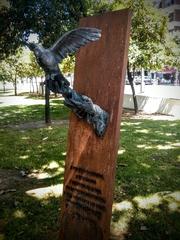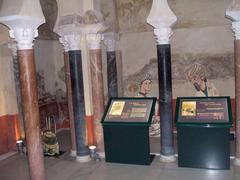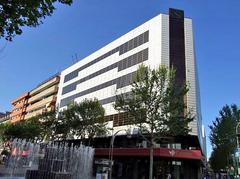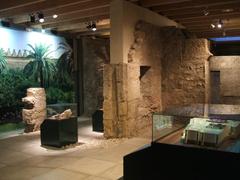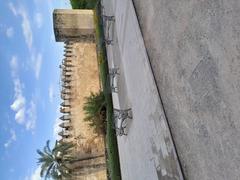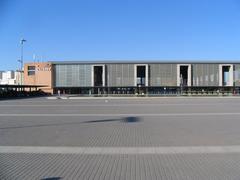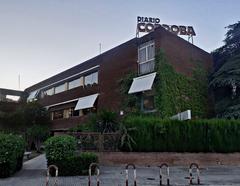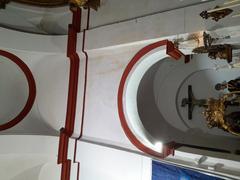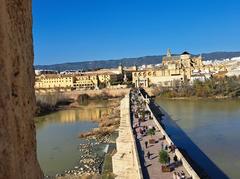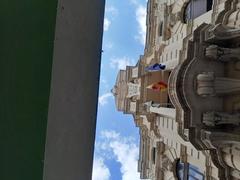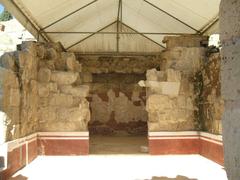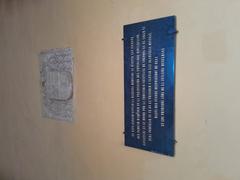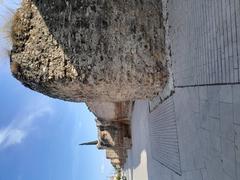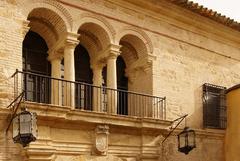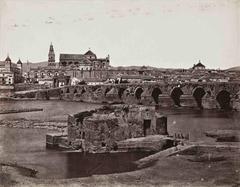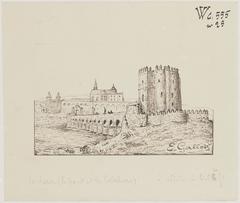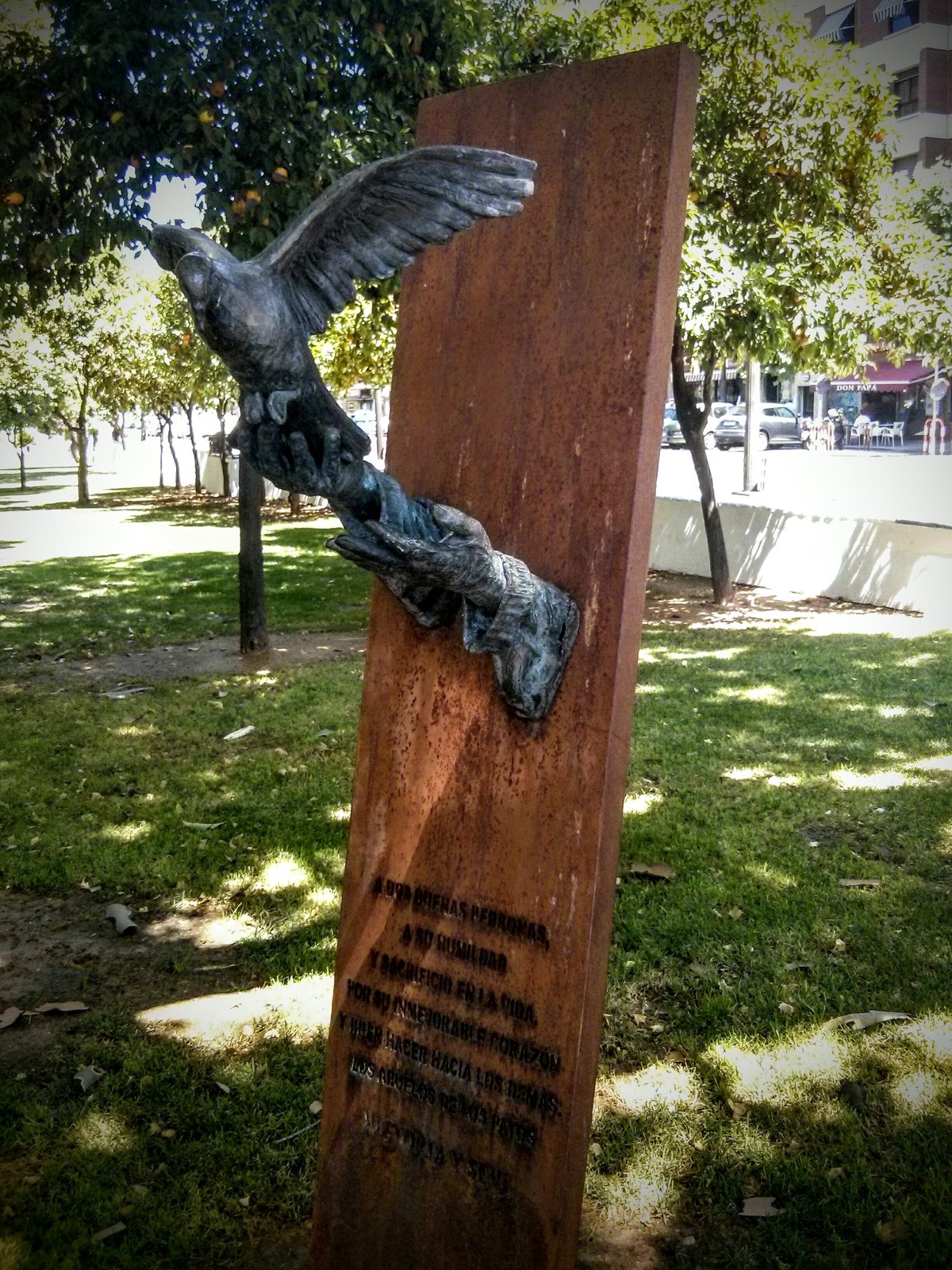
Visiting the Monument to Victoria Domínguez in Córdoba, Spain: Complete Guide with Tickets, Hours, and Tips
Date: 14/06/2025
Introduction
Nestled in Córdoba’s UNESCO World Heritage-listed historic center, the Monument to Victoria Domínguez stands as a modern tribute to one of the city’s most cherished cultural advocates. More than just a statue, this monument symbolizes Córdoba’s dedication to celebrating both its illustrious history and the vibrancy of its living traditions. Visitors will find a thoughtfully designed site that seamlessly integrates traditional materials and motifs with contemporary artistry, providing a compelling narrative about the city’s evolving identity.
This definitive guide will help you plan your visit by covering historical context, cultural significance, visitor information (including hours, tickets, accessibility), nearby attractions, and practical tips for an enriching experience. Whether you’re passionate about history, art, or community culture, the Monument to Victoria Domínguez is an essential stop on your Córdoba journey (UNESCO World Heritage Site; Spain.info; Turismo de Córdoba).
Table of Contents
- Introduction
- Historical Context of Córdoba’s Public Monuments
- The Monument to Victoria Domínguez: Life, Legacy, and Artistic Features
- Visiting the Monument: Practical Information
- Integration with Córdoba’s Cityscape and Nearby Attractions
- Visitor Experience: Tips & Amenities
- Preservation and Community Engagement
- Frequently Asked Questions (FAQ)
- Conclusion
Historical Context of Córdoba’s Public Monuments
Córdoba’s urban fabric is adorned with monuments reflecting its Roman, Islamic, and Christian legacies. From the ancient Roman mausoleum in Jardines de la Victoria to the iconic Mosque-Cathedral, the city’s public art narrates centuries of shifting cultures. The Monument to Victoria Domínguez, inaugurated in recent years, continues this tradition, highlighting the role of community figures in shaping Córdoba’s identity (UNESCO Urban Heritage Atlas).
The Monument to Victoria Domínguez: Life, Legacy, and Artistic Features
Victoria Domínguez: Legacy
Victoria Domínguez is celebrated for her pivotal role in preserving Córdoba’s famed patios and advocating for local cultural heritage. Her efforts, especially in promoting the annual Festival de los Patios, have ensured the survival of this tradition as a defining aspect of Córdoba’s intangible heritage.
Design Philosophy and Symbolism
The monument’s design is a harmonious blend of modern minimalism and traditional Andalusian motifs. Crafted from locally sourced limestone and bronze, its form evokes both resilience and community spirit. The life-sized bronze statue of Domínguez is surrounded by reliefs and low planters filled with regional flora, symbolizing her deep connection to the city’s gardens and patios.
Materials and Construction
- Limestone: Rooted in local architectural tradition, the limestone base connects the monument to Córdoba’s historic buildings.
- Bronze: Used for the statue, it ensures durability and a timeless aesthetic.
- Ceramic and Wrought Iron Motifs: Subtle details reference Córdoba’s patios and artisanal crafts.
Sculptural & Urban Elements
- Floral Reliefs: Incorporate Andalusian patterns, honoring Domínguez’s work with community gardens.
- Interactive Features: QR codes at the base lead to digital guides with biographical details and historical context.
- Lighting: Subtle LED illumination highlights the monument at night, creating a welcoming atmosphere.
Visiting the Monument: Practical Information
Hours and Tickets
- Open: 24/7; always accessible
- Admission: Free; no tickets required
- Special Events: Some cultural events may have set times or require advance registration (Turismo de Córdoba)
Accessibility
- Wheelchair Accessible: Level, paved paths and ramps
- Visual Accessibility: Tactile paving and braille signage; guide dogs permitted
- Public Transport: Multiple bus lines and proximity to the AVE train station; municipal parking with accessible spaces nearby (disabledaccessibletravel.com)
Guided Tours & Events
- Guided Tours: Many walking tours of Córdoba’s historic center include the monument, with options tailored for accessibility and multiple languages.
- Cultural Events: The monument hosts ceremonies and workshops, especially during the Festival de los Patios and other local festivities.
Integration with Córdoba’s Cityscape and Nearby Attractions
The monument’s central location allows easy combination with other must-see sites:
- Mezquita–Cathedral: The city’s most famous landmark.
- Roman Bridge: A picturesque stroll away.
- Jewish Quarter: Rich in history and charm.
- Victoria Market: For local food and refreshments (spain.info).
- Palacio de Viana: Renowned for its patios (World Travel Connector).
Its thoughtful landscaping—benches, aromatic herbs, and shaded areas—invites visitors to linger and reflect amid city life.
Visitor Experience: Tips & Amenities
Best Times to Visit
- Spring (March–May): Ideal for the patio festival; vibrant blooms and events.
- Autumn (September–November): Mild weather, fewer crowds.
- Early mornings or late afternoons: Softer light for photography and a tranquil atmosphere (wanderlustphotosblog.com).
What to Bring
- Comfortable shoes for cobblestone streets
- Sun protection (hat, sunglasses, sunscreen)
- Water bottle
- Camera or smartphone
Nearby Amenities
- Public restrooms, water fountains, shaded seating areas
- Cafés and restaurants with Andalusian specialties; Victoria Market food stalls
- Tourist offices for maps and assistance
Safety & Etiquette
- The area is safe and well-patrolled; use standard precautions
- Respect the monument: no climbing or littering
- Photography is encouraged; drone use may be restricted
Language
- Spanish is primary, but English is widely spoken in tourist areas; most signage is bilingual
Preservation and Community Engagement
The city’s heritage department ensures regular maintenance of the monument. Community programs—art workshops, storytelling, and educational tours—keep Victoria Domínguez’s legacy alive and foster local pride in Córdoba’s living traditions.
Frequently Asked Questions (FAQ)
Q: What are the opening hours?
A: The monument is open 24/7, year-round.
Q: Is there an entrance fee?
A: No, visiting the monument is free.
Q: Is the monument wheelchair accessible?
A: Yes, with level pathways, ramps, and braille signage.
Q: Are guided tours available?
A: Yes, many local tours include the monument.
Q: When is the best time to visit?
A: Spring and autumn for pleasant weather and vibrant events; early mornings or late afternoons for quieter visits.
Q: Is the site safe at night?
A: The area is well-lit and generally safe, but standard precautions are advised.
Conclusion
The Monument to Victoria Domínguez stands as a powerful symbol of Córdoba’s commitment to honoring both its monumental history and its dynamic, living traditions. Freely accessible and thoughtfully integrated into the cityscape, it offers a tranquil space for reflection and community engagement. Enhance your exploration of Córdoba’s rich heritage by including this monument in your itinerary—especially during the Festival de los Patios for an immersive cultural experience.
For interactive guides, updated event information, and more local insights, download the Audiala app and follow us on social media.
References
- UNESCO World Heritage Site
- Spain.info: Córdoba Destination Guide
- Turismo de Córdoba: Monuments
- Estatua de Maimónides
- UNESCO Urban Heritage Atlas: Córdoba
- Earth Trekkers: 1 to 2 Days in Córdoba Itinerary
- Wanderlust Photos Blog: Córdoba Visitor Guide
- Victoria Market
- World Travel Connector: Things to Do in Córdoba
- Disabled Accessible Travel: Córdoba
- Not About The Miles: Córdoba Activities
- The Gap Decaders: Visit Córdoba
- Voyage Tips: Things to Do in Córdoba
